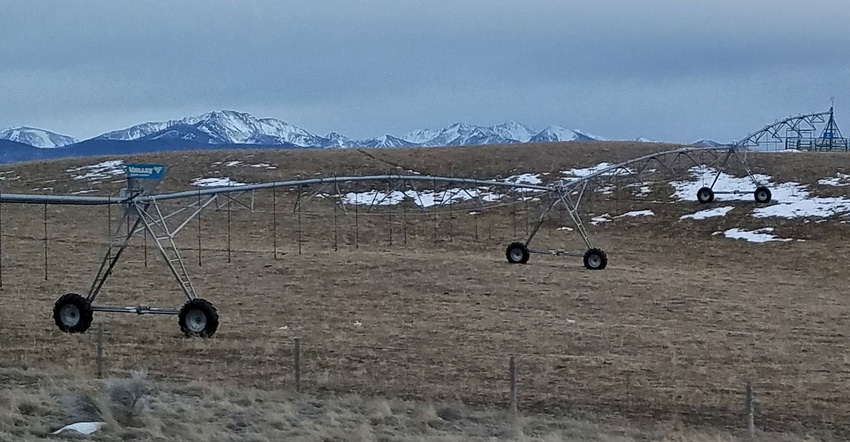March 23, 2018

Even for someone who's accustomed to driving five or six hours across the Plains for interviews, driving 16 hours over the course of two days can be taxing.
The knowing look on the car rental employee's face in Missoula, Mont., after I told him we came from Lincoln, Neb., told the whole story.
To paraphrase: "I feel for you. My in-laws live in Columbus. Every year, we spend four days driving for a week of vacation."
It's a long distance to drive, but well worth the trip to see old friends — and to get a glimpse of agriculture in a different part of the world.
For an irrigation nerd, driving through Nebraska, eastern Wyoming and Montana gives a windshield view of irrigation systems and irrigated crops in different parts of the High Plains and Intermountain West.
Of course, for those flying over Nebraska and other Great Plains states, it's easy enough to see center-pivot circles (at a low enough elevation).
Center pivots can be found in just about any state in the West, but in Nebraska, they reign supreme. However, it's obvious from driving across the countryside, that wheel lines (mostly found in a few alfalfa and grass hay fields in Nebraska) are much more prominent in states like Montana, Idaho and Utah.
According to USDA's 2013 Farm and Ranch Irrigation Survey, 152 farms had wheel-move systems in Nebraska in 2013 irrigating a total of 8,112 acres, compared with 12,573 farms with center pivots irrigating a total of 7,274,378 acres.
Meanwhile, 1,352 farms had wheel-move systems in Montana irrigating164,267 acres, compared with 1,421 farms with center pivots irrigating 595,590 acres.
Compare that with neighboring Idaho, where there were 2,784 farms with wheel-move systems irrigating 458,719 acres, and 3,025 farms with center pivots irrigating 2,229,589 acres.
What's more interesting is in what has traditionally been irrigation country (the semi-arid and arid West, where water is more limited), irrigated acres are slowly but surely declining.
From 2007 to 2012, the U.S. experienced a net loss of 777,074 irrigated acres. And USDA National Agricultural Statistics Service data shows irrigated acres continue to decline in the West and increase in the East.
Between 2002 and 2007, Nebraska experienced the largest expansion of irrigated acres of the top 10 irrigated states, adding about 934,000 acres, while the remaining nine states (most of them Western states) saw a net decrease of about 186,000 acres.
Data from the 2013 USDA Farm and Ranch Irrigation Survey shows the states with the biggest change in irrigated acres from 1997 to 2013 are in the southeast and Midwest, including states like Georgia, Mississippi, Illinois and Indiana, with an increase of 50% or more.
Still, as pressure rises for growers to make more efficient use of their acres — in places where short-term drought is becoming more prevalent, and where it's becoming more critical to optimize water and nutrient availability to crops at certain times in the year — irrigation continues to be in demand.
You May Also Like




